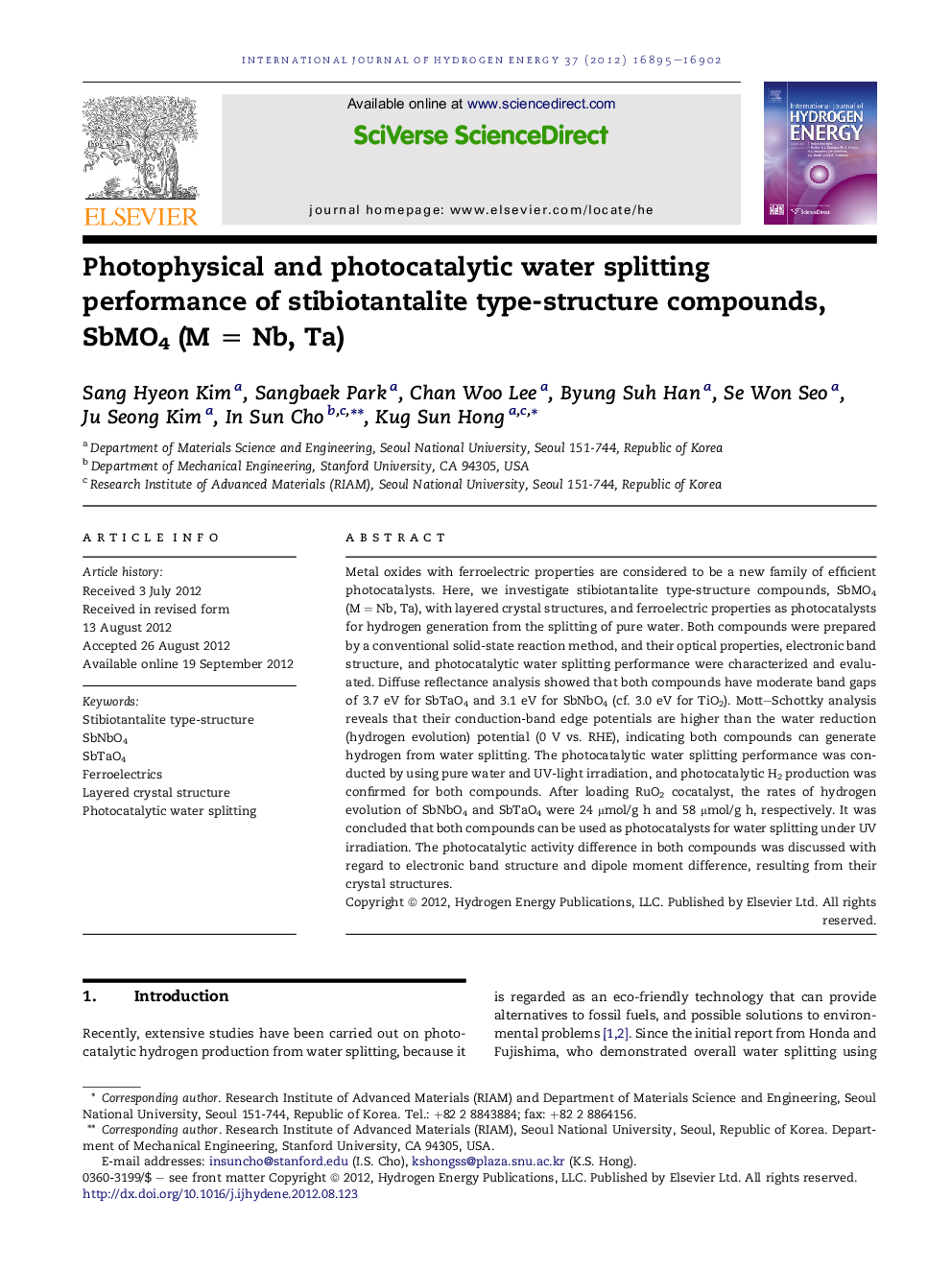| Article ID | Journal | Published Year | Pages | File Type |
|---|---|---|---|---|
| 1270870 | International Journal of Hydrogen Energy | 2012 | 8 Pages |
Metal oxides with ferroelectric properties are considered to be a new family of efficient photocatalysts. Here, we investigate stibiotantalite type-structure compounds, SbMO4 (M = Nb, Ta), with layered crystal structures, and ferroelectric properties as photocatalysts for hydrogen generation from the splitting of pure water. Both compounds were prepared by a conventional solid-state reaction method, and their optical properties, electronic band structure, and photocatalytic water splitting performance were characterized and evaluated. Diffuse reflectance analysis showed that both compounds have moderate band gaps of 3.7 eV for SbTaO4 and 3.1 eV for SbNbO4 (cf. 3.0 eV for TiO2). Mott–Schottky analysis reveals that their conduction-band edge potentials are higher than the water reduction (hydrogen evolution) potential (0 V vs. RHE), indicating both compounds can generate hydrogen from water splitting. The photocatalytic water splitting performance was conducted by using pure water and UV-light irradiation, and photocatalytic H2 production was confirmed for both compounds. After loading RuO2 cocatalyst, the rates of hydrogen evolution of SbNbO4 and SbTaO4 were 24 μmol/g h and 58 μmol/g h, respectively. It was concluded that both compounds can be used as photocatalysts for water splitting under UV irradiation. The photocatalytic activity difference in both compounds was discussed with regard to electronic band structure and dipole moment difference, resulting from their crystal structures.
► First report of SbMO4 (M = Nb, Ta) compounds as photocatalysts for water splitting. ► Ferroelectric materials with layered crystal structure for efficient photocatalysts. ► Conduction band edge and distorted crystal structure affect photocatalytic activity.
